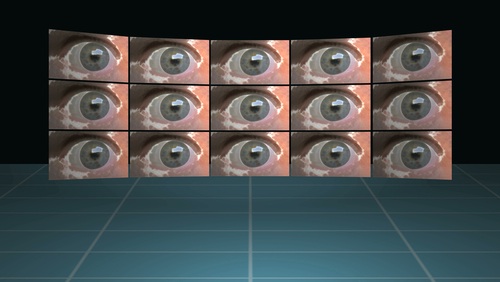Each year, Time magazine does a story on “10 ideas that are changing the world.” This year, the editors have made it a more forward-thinking feature, labeling it “10 Ideas for the Next 10 Years.” And as is the case with most everything these days, I managed to see several risk management-related angles in some of the trends they expect to shape the coming decade.
Here is a run-down with some thoughts.

Time’s Idea: Remapping the World
“Good borders make good neighbors. Bad ones make wars”
This idea basically says that physically redrawing some national borders — or at least minimizing their importance over logistical factors like multi-national infrastructure — will cause less international and intra-national conflict. Obviously, the risk management benefits here would come from less political risk across the globe.
If Sudan could be divided, the civil wars there may become less intractable and economic opportunities may open up to multinationals — which could help both companies otherwise too concerned about conflict to set up shop in-country and the people living there who desire jobs and better access to goods. A world full of “good neighbors” also clearly benefits any utilities or other companies trying to lay down the transnational pipelines or internet cables that will be increasingly necessary in our increasingly globalized future.
Particularly in the Middle East.
Time’s Idea: Bandwidth Is the New Black Gold
“And it’s a scarce resource”
An under-reported risk, the dependence on bandwidth for real-time information exchange is increasingly vital to all companies and organizations. Whenever this is interrupted, so is business. Today, aside from major disaster situations, this interruption is mostly an inconvenience. But in the future, as more and more of this bandwidth is taken up by video and other resource-intensive applications, there may be real problems.
In time, the mere slowdowns we see today may be eclipsed by full-scale information traffic jams. But beyond that, the deeper problems will be with high prices and possible profiteering. As demand for bandwidth goes up, suppliers will logically be able to charge more, as happens in energy markets.
Can we rely on private industry — the cable and telephone companies — to build its way out of these problems? In a word, maybe.
It will be difficult to manage this risk individually, but organizations need to be thinking about these “information jams” in years to come. Tim Wu of the New American Foundation explains it further in this video.
Time’s Idea: In Defense of Failure
“Making mistakes is a great American freedom”
This idea centers on the idea that the great innovation that marked the United States’ ascendence to the front of the global economy in the 20th century was greatly aided by the fact that its citizens were not afraid to fail. They took big chances knowing that even if they failed, they would have a chance “to try, try again” without being entirely wiped out.
The article worries that this courageousness is waning, mainly due to macroeconomic realities, and that “rather than launch a quixotic war on failure” as the author argues has been done against complex financial instruments on Wall Street, “we should be using what we’ve learned to build a system that fails better.”
This, of course, is the new tenant of risk management: We should never try to avoid all risks — we just need to make sure we are taking calculated risks with contingencies built in for failure.
Time’s Idea: TV Will Save the World
“In a lot of places, it’s the next best thing”
Globally, the biggest impediment to better disaster preparedness and building codes is poverty. Places like Haiti and rural China just don’t have the resources to mandate and enforce developed world standards for things like foundations and reinforced concrete.
Somewhere lower on the list of challenges — but no less worth striving to overcome — is the educational gap. More so than in the developing world, the United States and Europe have learned from their past disasters. A lot of this has come from in-depth, post-mortm investigations of disasters. And a lot of the demand for such investigations has always come from the proliferation of TV news and the fact that citizens are generally outraged that such calamities could happen. People want to know why people were allowed to die or houses were permitted to burn, and the impetus behind that outrage often comes from seeing the tragic images in moving picture form on TV.
Too much TV has been associated with violence, obesity and social isolation. But TV is having a positive impact on the lives of billions worldwide, and as the spread of mobile TV, video cameras and YouTube democratize both access and content, it will become an even greater force
Sure, a lot of TV is more candy than vegetables (think Jersey Shore, SportsCenter or American Idol), but if you are still among those who erroneously think that television will rot your brain, you obviously haven’t seen The Wire. Or Spike Lee’s When the Levees Broke, which premiered on HBO.
In related news, The Wire creator David Simon’s upcoming HBO show Treme will focus on the music scene in post-Katrina New Orleans. Expect something amazing that will speak on what was the worst “natural” disaster to hit this country.
And, yes, this was mostly just an excuse to make you watch the new trailer for Treme embedded below. (via Video Gum) (UPDATE: That trailer is no longer available … replacement video below. Don’t worry, it’s just as good. Probably even better.)
You can also view the other six “ideas for the next 10 years” over at Time.com. Let us know of any other major risk management-related concepts that stand out to you.


